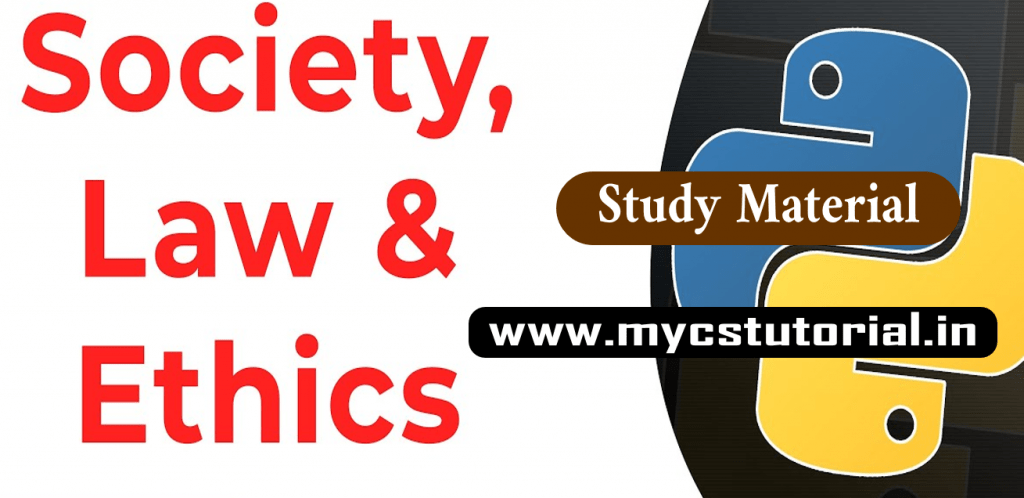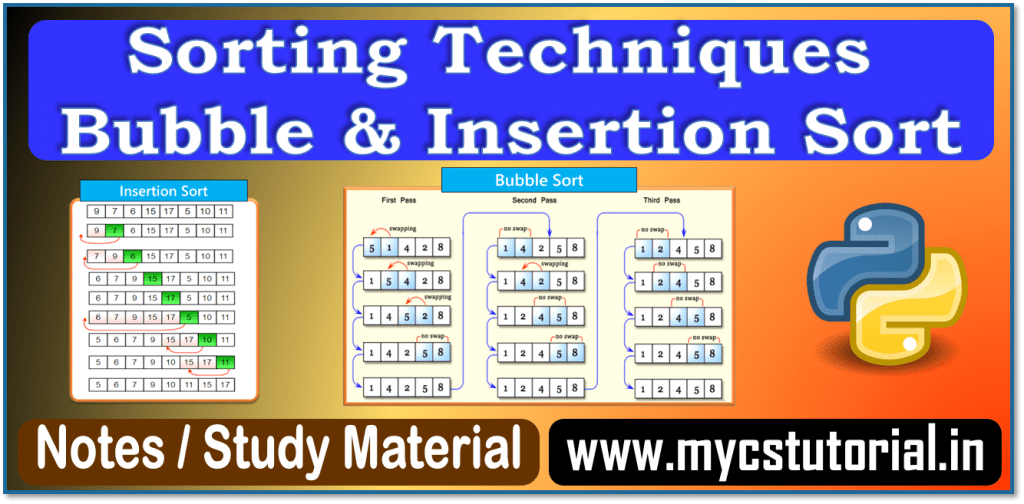Computer Memory

A computer system needs memory to store the data and instructions for processing. Whenever we talk about the ‘memory’ of a computer system, we usually talk about the main or primary memory. The secondary memory (also called storage device) is used to store data, instructions and results permanently for future use.
Units of Memory
A computer system uses binary numbers to store and process data. The binary digits 0 and 1, which are the basic units of memory, are called bits. These bits are grouped together to form words. A 4-bit word is called a Nibble. A two-nibble word i.e. 8-bit word is called a Byte.
| Unit | Description | Unit | Description |
| KB (Kilobyte) | 1 KB = 1024 Bytes | PB (Petabyte) | 1 PB = 1024 TB |
| MB (Megabyte) | 1 MB = 1024 KB | EB (Exabyte) | 1 EB = 1024 PB |
| GB (Gigabyte) | 1 GB = 1024 MB | ZB (Zettabyte) | 1 ZB = 1024 EB |
| TB (Terabyte) | 1 TB = 1024 GB | YB (Yottabyte) | 1 YB = 1024 ZB |
Types of Memory
Computers have two types of memory namely — Primary memory and Secondary memory.
(A) Primary Memory – Primary memory is an essential component of a computer system. Program and data are loaded into the primary memory before processing. The CPU interacts directly with the primary memory to perform read/ write operations.
It is of two types viz.
i) Random access memory (RAM), and ii) Read-only memory (ROM).
RAM is volatile i.e. as long as the power is supplied to the computer, it retains the data in it. But as soon as the power supply is turned off, all the contents of RAM are wiped out.
It is used to store data temporarily while the computer is working. Whenever the computer is started or a software application is launched, the required program and data are loaded into RAM for processing.
RAM is usually referred to as main memory and it is faster than secondary memory or storage devices.
ROM is non-volatile, which means its contents are not lost even when the power is turned off.
It is used as small but faster permanent storage for the contents which are rarely changed.
For example, the startup program (boot loader) that loads the operating system into RAM is stored in a ROM.
(B) Cache Memory
RAM is faster than secondary storage, but not as fast as a computer processor. So, because of RAM, a CPU may have to slow down.
To speed up the operations of the CPU, very high-speed memory is placed between the CPU and the primary memory known as Cache Memory.
It stores copies of the data from frequently accessed primary memory locations, thus, reducing the average time required to access data from the primary memory.
When the CPU needs to access memory, it first examines the cache. In case the requirement is met, it is read from the cache, otherwise, the primary memory is accessed.
(C) Secondary Memory
A computer system needs auxiliary or secondary memory to permanently store the data or instructions for future use.
Secondary memory is non-volatile and has a larger storage capacity than primary memory.
It is slower and cheaper than the main memory. But, it cannot be accessed directly by the CPU.
Contents of secondary storage need to be first brought into the main memory for the CPU to access.
Examples of secondary memory devices include Hard Disk Drives (HDD), CD / DVD, Memory Cards, and Solid-State drives (SSD) which support very fast data transfer speeds as compared to earlier HDDs.
Also, data transfer between computers has become easier and simpler due to the availability of small-sized and portable flash/pen drives.
Data Capturing, Storage, Retrieval, Deletion and Recovery
(A) Data Capturing – The process of gathering data from different sources in digital form called Data Capturing. Data may be captured using, keyboard, bar code readers, remote sensors on earth orbiting satellites etc.
(B) Data Storage – It is the process of storing the captured data for processing later.
Data Server – In large organisations, computers with larger and faster storage called data servers are deployed to store vast amount of data.
Such dedicated computers help in processing data efficiently. However, the cost (both hardware and software) of setting up a data server as well as its maintenance is high.
C) Data Retrieval – The process of fetching data from the storage devices, for its processing as per the user requirement, called Data Retrieval.
D) Data Deletion – Deletion means removing of files or folders from the storage device is called Data Deletion. The storage devices can malfunction or crash down resulting in the deletion of the stored data.
Deleting digitally stored data means changing the details of data at bit level, which can be very time-consuming. Therefore, when any data is simply deleted, its address entry is marked as free, and that much space is shown as empty to the user, without actually deleting the data.
E) Data Retrieval – Data recovery is a process of retrieving deleted, corrupted and lost data from secondary storage devices.
In case data gets deleted accidentally or corrupted, there arises a need to recover the data. Recovery of the data is possible only if the contents/memory space marked as deleted have not been overwritten by some other data.
Security Concerns with Data:
There are usually two security concerns associated with data.
One is its deletion by some unauthorized person or software.
These concerns can be avoided by limiting access to the computer system and using passwords for user accounts and files.
There is also an option of encrypting files to protect them from unwanted modification.
The other concern is related to the unwanted recovery of data by unauthorized users/software.
This concern can be mitigated by using proper tools to delete or shred data before disposing off any old or faulty storage device.
Software
The physical components of the computer system are known as the hardware. But the hardware is of no use on its own. Hardware needs to be operated by a set of instructions. These sets of instructions are referred to as software.
Software: It is that component of a computer system, which we cannot touch or view physically. It comprises the instructions and data to be processed using the computer hardware.
The computer software and hardware complete any task together.
The software comprises a set of instructions that on execution deliver the desired outcome. In other words, each software is written for some computational purpose. In other words, each software is written for some computational purpose.
Some examples of the software include operating systems like Ubuntu or Windows 7/10, word processing tools like LibreOffice or Microsoft Word, video players like VLC Player, and photo editors like GIMP and LibreOffice Draw.
Needs of Software
We cannot instruct the hardware of a computer directly. The software acts as an interface between human users and the hardware.
The main purpose of the software is to make the computer hardware useful and operational. The software knows how to make different hardware components of a computer work and communicate with each other as well as with the end-user.
Category of Software
Mainly software is categorized into three categories –
- System Software
- Operating Systems
- Device Drivers
- System Utilities
- Programming Tools and Language Processor
- Application Software
- General Purpose Application Software
- Customized Application Software
System Software
The software that provides the basic functionality to operate a computer by interacting directly with its constituent hardware is known as System Software.
A system software knows how to operate and use different hardware components of a computer.
It provides services directly to the end user, or to some other software.
Examples of system software include operating systems, system utilities, device drivers, etc.
(A) Operating System
As the name implies, the operating system is system software that operates the computer. An operating system is the most basic system software, without which other software cannot work.
The operating system manages other application programs and provides access and security to the users of the system. Some of the popular operating systems are Windows, Linux, Macintosh, Ubuntu, Fedora, Android, iOS, etc.
(B) System Utilities
The software used for maintenance and configuration of the computer system is called system utility.
Some system utilities are shipped with the operating system for example disk defragmentation tool, formatting utility, system restore utility, etc.
Another set of utilities are those which are not shipped with the operating system but are required to improve the performance of the system, for example, anti-virus software, disk cleaner tool, disk compression software, etc
(C) Device Drivers
As the name signifies, the purpose of a device driver is to ensure the proper functioning of a particular device. When it comes to the overall working of a computer system, the operating system does the work.
The responsibility for overall control, operation, and management of a particular device at the hardware level is delegated to its device driver.
The device driver acts as an interface between the device and the operating system. It provides required services by hiding the details of operations performed at the hardware level of the device.
Just like a language translator, a device driver acts as a mediator between the operating system and the attached device.
Example: Printer Driver, Scanner Driver, Audio Driver, etc.
Programming Tools
In order to get some work done by the computer, we need to give instructions that are applied to the input data to get the desired outcome.
Computer languages are developed for writing these instructions.
Humans are able to write programs in high-level
language (i.e. English language), computers understand machine language.
There is a need to convert high-level to machine-level language, for which translators are needed.
(A) Classification of Programming Languages
It is very difficult for a human being to write instructions in the form of 1s and 0s i.e. binary digits. So different types of computer programming languages are developed to simplify the coding. Two major categories of computer programming languages are-
(i) Low-level languages and
(ii) High-level languages.
(i) Low-level languages are machine-dependent languages and include machine language and assembly language.
(a) Machine language uses 1s and 0s to write instructions that are directly understood and executed by the computer.
But writing a code in machine language is difficult as one has to remember all operation codes and machine addresses. Also finding errors in the code
written in machine language is difficult.
(b) Assembly Language: To simplify the writing of code, assembly language was developed that allowed the usage of English-like words and symbols instead of 1s and 0s, called Mnemonics.
But one major drawback of writing code in this language is that the code is computer specific, i.e., the code written for one type of CPU cannot be used for another type of CPU.
(c) High-level languages are machine independent and are simpler to write code into.
Instructions are using English-like sentences and each high-level language follows a set of rules, similar to natural languages.
However, these languages are not directly understood by the computer. Hence, translators are needed to translate high-level language codes into machine language.
Examples of high-level languages include C++, Java, Python, etc.
(B) Language Translators
As the computer can understand only the machine
language, a translator is needed to convert the program written in assembly or high-level language to machine language.
Source code: The program code written in assembly or high-level language is called source code.
Object Code (Machine Code): The source code is converted by a translator into the machine-understandable form called object (machine) code.
Types of Language Translators:
As we have different types of computer languages, different translators are needed to convert the source code to machine code.
The three types of translators used in computing systems are
(i) Assembler, (ii) Compiler, and (iii) Interpreter.
Assembler: The translator used to convert the code written in assembly language to machine language is called an assembler.
Compiler: The compiler converts the codes written
in a high-level language (source code) to machine-understandable form (machine code) for execution by the computer.
If the code follows all syntactic rules of the language, then it is executed by the computer. Once translated, the compiler is not needed.
Interpreter: An Interpreter also translate the code written in a high-level language to machine code.
An interpreter translates one line at a time instead of the whole program in one go. An interpreter takes one line, converts it into executable code if the line is syntactically correct, and then repeats these steps for all lines in the source code.
An interpreter is always needed whenever a source code is to be executed.
Application Software
The system software provides the core functionality of the computer system.
However, different users need the computer system for different purposes depending upon
their requirements.
Application Software is the set of programs necessary to carry out operations for a specified
application. Application software works on top of the system software.
There are two broad categories of application software— (a) General purpose and (b) Customised application software.
(A) General Purpose Software
The application software was developed for generic
applications, to cater to a bigger audience in general is called general-purpose software.
Such ready-made application software can be used by end users as per their requirements.
For example, the spreadsheet tool Calc of LibreOffice can be used by any computer user to do calculations or to create an account sheet. Adobe Photoshop, GIMP, Mozilla web browser, iTunes, etc., fall in the category of general-purpose software.
(B) Customised Software
These are custom or tailor-made application software, that are developed to meet the requirements of a specific organisation or an individual. They are better suited to the needs of an individual or an organisation, considering that they are designed as per special requirements.
Some examples of user-defined software include websites, school management software, accounting software, etc.
It is similar to buying a piece of cloth and getting a
tailor-made garment with the fitting, colour, and fabric of our choice.
Operating System
An Operating System is a program, which acts as an interface between a user and the hardware (i.e., all computer resources). It is the most important system software.
An operating system (OS) can be considered to be a
resource manager which manages all the resources of a computer, i.e., its hardware including CPU, RAM, Disk, Network and other input-output devices.
It also controls various application software and device drivers, manages system security and handles access by different users.
Examples of popular OS are Windows, Linux, Android, Macintosh and so on.
Objectives of an Operating System:
The primary objectives of an operating system are
two-fold.
- The first is to provide services for building and running application programs. When an application program needs to be run, it is the operating system that loads that program into memory and allocates it to the CPU for execution.
- When multiple application programs need to be run, the operating system decides the order of the execution.
- The second objective of an operating system is to provide an interface to the user through which the user can interact with the computer.
- A user interface is a software component that is a part of the operating system and whose job is to take commands or inputs from a user for the operating system to process.
Class 11 Computer Science Notes
- Class 11 Computer Science NCERT Book Study Material as PDF
- Class 11 Computer Science Study Material PDF
- Computer System: Overview – Notes
- Number Systems & Encoding Scheme – Notes
- Boolean Logics – Notes
- Emerging Trends – Notes
- Introduction to Problem Solving – Notes
- Getting Started with Python – Notes
- Python Fundamentals – Notes
- Data Handling – Notes
- Flow of Control (Selection Statement, Iterative Statement and Jump Statement) – Notes
- Strings Manipulation in Python
- List Manipulation – Notes
- Tuples Manipulation in Python Notes
- Dictionary Handling in Python – Notes
- Sorting Techniques in Python – Notes
- Introduction to Python Module – Notes
Class 11 Computer Science – Important Question Answer
- Class 11 Computer Science NCERT Exercise Solution
- Class 11 Computer Science – Chapter 1: Computer Systems
- Ch 2 Emerging Trends NCERT Exercise Solution – Class 11 Computer Science
- Encoding Schemes and Number Systems NCERT Exercise solutions
- Class 11 Computer Science Chapter 5 Getting Started with Python NCERT Solution
- Class 11 Computer Science Chapter 4 Introduction to Problem Solving NCERT Solution
- Class 11 Computer Science Ch 6 Flow of Control NCERT Exercise Solution
- Class 11 Computer Science Ch 7 Functions in Python NCERT Book Exercise Solution
- Class 11 Computer Science Ch 8 Strings in Python NCERT Book Exercise Solution
- Class 11 Computer Science Ch 9 Lists in Python NCERT Book Exercise Solution
- Class 11 Computer Science Ch 11 Societal Impacts NCERT Book Exercise Solution
- Class 11 Computer Science Ch 10 Tuples and Dictionary in Python NCERT Book Exercise Solution
By Anjeev Kr Singh – Computer Science Educator
Published on : May 5, 2021 | Updated on : April 29, 2023






